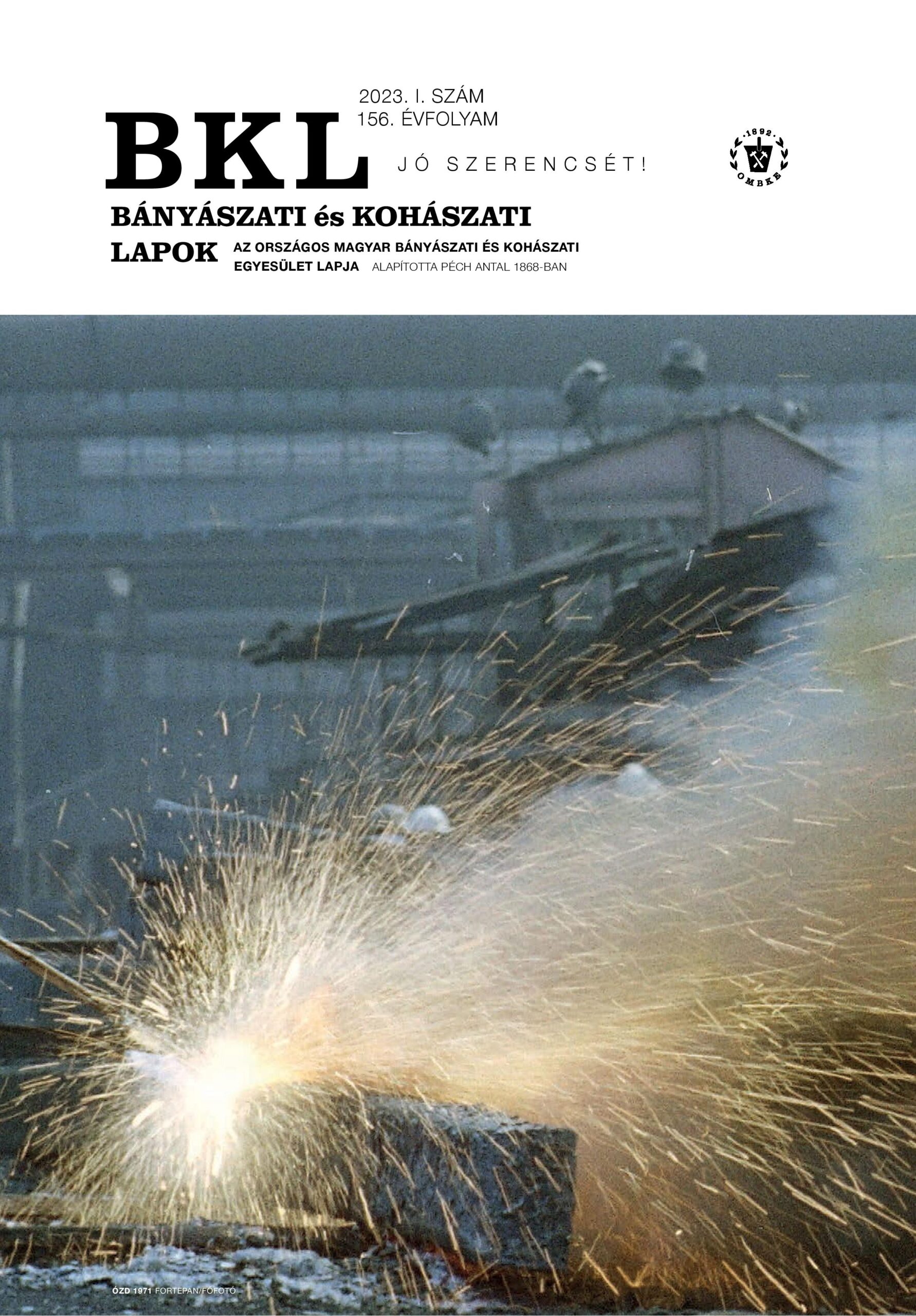Anodizing surface treatments of aluminium alloys Challenges and solutions
Abstract
The aluminum processing industry in Hungary works with a great variety of malleable and casting aluminum alloys where anodizing of the aluminum products is usually done by service providers who surface finish (i.e. anodize or anodize/pre-treat and powder paint) the aluminum parts. For anodizers, still the greatest challenge is the proper electrochemical surface oxidation of the aluminum castings containing high amounts of silicon (~6–12 mass%), as well as copper, iron, magnesium, etc. Moreover, there is another challenge, namely the increasingly stringent environmental and health regulations, therefore, most anodizers are working with sulfuric acid base electrolytes and trying to introduce new (e.g. Cr(VI)-free) sealing chemicals. Aluminium alloys used in most pressure die casting factories are primarily alloyed with silicon, which is a chemical element relatively resistant against oxidation, but improves the fluidity of the melts prepared for metallurgical casting the parts. Such alloys usually also contain a few percent of copper, iron and zinc, etc., which all have significant influence also on the phase composition, microstructure, and many other important physical, mechanical and chemical properties (thickness distribution, homogeneity, porosity, hardness, corrosion resistance, etc.) of the anodized oxide layer. In our case, while applying the GDOES technique, in depth distribution of all the original alloying as well as the later embedded elements, like S, O, and H could be detected with high accuracy. By supplementing the GDOES technique with SEM-EDS, XRF, XRD measurements, also the microstructure and phase composition (grain size, porosity, precipitates, inclusions, intermetallic compound phases, etc.) of the relatively thin anodized layers could be well explored, which help explain the causes of surface defects often observed on such casting alloys, especially when the surface of the as-cast parts are not properly cleaned (de-greased, abrasive blasted and/ or machined) before anodizing. In the case of the most widely used pressure/die casting alloys, for example, those of AlSi9Cu3(Fe), AlSi11Cu2(Fe) and AlSi12Cu1(Fe) often must be pre-treated by removing several times 10 μm (up to 1 mm approx.) surface layers. In particular, it is of utmost importance, when the surface of pressure cast objects is subjected to sand/grit blasting, then oxidized with the so-called hard anodizing process, where the structure of the anodized layer is denser and much less structured than the normal/soft anodized ones. Nevertheless, most of the observed defects in the anodized layers can be traced back to the actual compositional characteristics of the aluminum alloy at its outermost surface region, because this produces a particular type of the anodized layer during the electrochemical surface oxidation. Post-treatment operations (so-called hot or cold sealing) of the anodized parts also throw up challenges both for the operators and the developers. Although, by now there are many new post-treatment sealants (Na-acetate, Ce-acetate, Ce-nitrate, Ce-chloride, Na-silicate, Na-aluminate, LiOH, Mg-acetate and Ca-acetate, sol-gel treatments, etc.) and sealing processes described and evaluated in many scientific articles; unfortunately, there are only very few data currently available on the practical testing and accelerated corrosion resistance testing of these newly developed post-treating materials. Therefore, further developments, i.e. solving the many pre-treatments then anodizing and post-treatment challenges, are highly needed and for sure must and will be driven by the many users and producers of the different anodized aluminium products from the cutlery makers to the high-tech aerospace industries.
References
D. Caliari,, G. Timelli, T. Salata, G. Cavagnini, S. Maestri: Surface defects of anodized HPDC Al alloy components, La Metallurgia Italiana (2016) n. 6 6972.
Alumínium kézikönyv, Főszerk.: Dr. Domony András, Műszaki Könyvkiadó, Budapest, 1967, 592-593.
"Anodizing - functional and decorative refinement of aluminum parts", Aalberts surface treatment BRIEF INFORMATION, p. 10 https://www.aalberts-st.com/uploads/2021/04
Török T., Szirmai G., Orosz V.: Plazmagerjesztésű (GD) optikai emissziós spektroszkópiás mélységprofi lelemzés alkalmazási lehetőségei bevonattechnikai és korróziós területeken, Korróziós Figyelő (2011) 51(5) 99-105.
D. Caliari et al.: Microstructural and tribological investigations of diecast and hard anodized AlSiCu alloys, Surface and Coatings Technology 352 (2018) 462-473. https://doi.org/10.1016/j.surfcoat.2018.07.084
Military Specifi cation - Anodic Coatings For Aluminum And Aluminum Alloys, 1993.
G. Scampone, G. Timelli: Anodizing Al-Si Foundry Alloys: A Critical Review, Advanced Engineering Materials 2022, 2101480. https://doi.org/10.1002/adem.202101480
Lichtenbergerné dr. Bajza E., Komjáti Imre, dr. Vértes Katalin: Alumínium korrózió, Műszaki Könyvkiadó 1983.
Dömölki Ferenc: Az alumínium eloxálása, II. 3. fejezet (313-346 o.), Korszerű fémipari felületkezelési és hulladékgazdálkodási módszerek, Szerk.: Török Tamás, Miskolci Egyetem, 2004
E. Rocca et al.: Chemical reactivity of self-organized alumina nanopores in aqueous medium. Acta Mater. 59 (2011) 962-970. https://doi.org/10.1016/j.actamat.2010.10.020
E. Rocca et al.: Structural evolution in nanoporous anodic aluminium oxide. Mater. Chem. Phys. 134 (2012) 905-911. https://doi.org/10.1016/j.matchemphys.2012.03.088
S. U. Ofoegbu et al.: The Sealing Step in Aluminum Anodizing: A Focus on Sustainable Strategies for Enhancing Both Energy Efficiency and Corrosion Resistance, Coatings 2020, 10, 226; DOI: 10.3390/ coatings10030226 (55 pages) https://doi.org/10.3390/coatings10030226
F. Peltier, D. Thierry: Review of Cr-Free Coatings for the Corrosion Protection of Aluminum Aerospace Alloys, Coatings 2022, 12, 518. https://doi.org/10.3390/coatings12040518



